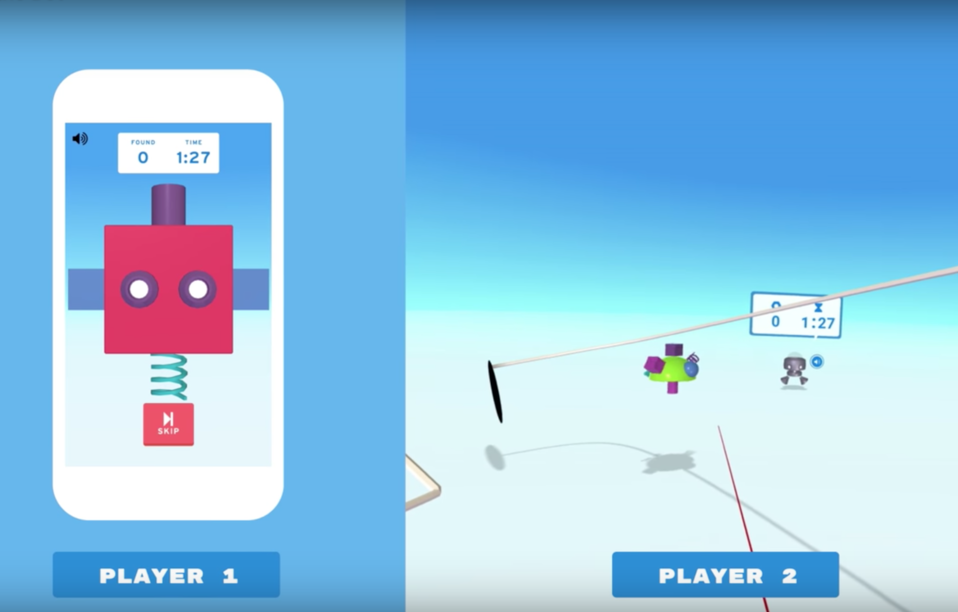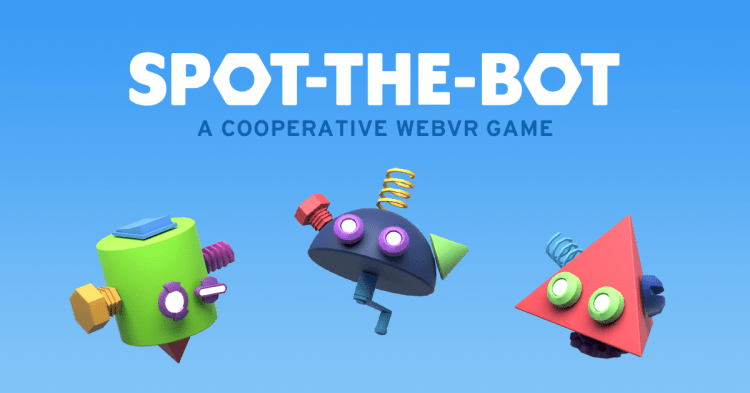I like to encourage an iterative approach to designing immersive games, which happens if developers and studios simply afford themselves the space and opportunity to experiment in order to discover how their concept can be designed with effective hooks that get players to play repeatedly.
Earlier this month I published an article that positioned WebVR gaming as the sweet spot the VR industry should be prioritizing. I then followed up to criticize the knee-jerk approach many developers and studios automatically take when building games and content with high fidelity as the central frame.
WebVR, of course, I held up high as the “oppressed” lingua franca of VR!
Let’s take a closer look at the iterative approach taken by three pioneering studios that developed the first generation of WebVR games. Each of these three cases were originally showcased on Google’s WebVR Experiments when it debuted back in April.
June 5th: The AI Audit in NYC
Join us next week in NYC to engage with top executive leaders, delving into strategies for auditing AI models to ensure fairness, optimal performance, and ethical compliance across diverse organizations. Secure your attendance for this exclusive invite-only event.
First up is Mr Nom Nom by Zurich-based Etter Studio, where the player transforms into a donut tasked with wrapping its ‘fashionable’ scarf around very hungry characters, trapping them by completing a circle around them. It was developed by a team of six people working across three countries: Switzerland, Germany, and Hong Kong.
Christian Etter, the studio’s founder and game director for Mr Nom Nom, described the iterative process to building it:
“We had some interesting prototypes, a system which allows to modularly build very basic geometrical characters and then the system would animate the characters generatively. Which worked incredibly well since the animation was much better and smarter than if it would have been done manually. Out of this prototype we slowly built the game, taking many different directions.”

Above: Mr Nom Nom by Etter Studios
It’s telling to point out that Etter was quite the VR skeptic prior to his studio’s foray into WebVR.
“Previously I have been quite critical of VR, because of the expensive and heavy hardware requirements and therefore thought it’s only for a small group of well-off tech enthusiasts. And frankly, VR didn’t appear very useful other than for things such as flight simulators. But by enabling WebVR via the browser would bring VR seamlessly to a large audience — it seemed like a good idea to make it more accessible and hence we wanted to push in this direction too and were curious to experiment with this new standard.” Etter told me.
Next up is Spot-the-Bot by U.S.-based Hook Studios, a social two-player game that allows you to team up with friends in a collaborative race against time. While “player one” is immersed in a virtual world filled with robots and parts, “player two” watches on using his mobile or desktop screen, serving as a spotter by helping player one to, you guessed it, “spot the bot” in VR.
It’s a clever and novel approach that takes advantage of WebVR’s unique feature of allowing users to play either with a VR headset or without one. But that they’ve actually assigned and fixed the roles according to immersive vs screen is a pretty cool but surprising twist in design for me, and highlights how the very nature of WebVR offers a variety of new possibilities in cross-platform gameplay.
“We started by prototyping a variety of gameplay mechanisms around creating an experience that was simple, social, collaborative and could take place in a shared space. To further those goals, and inspired by social games like Keep Talking and Nobody Explodes, we focused on asymmetrical gameplay: dividing up both the information and interaction. This also provided a secondary benefit of simplifying our networking code, not requiring us to synch up complex information like physics simulations or animation frames. From there we settled on the concept for what became Spot-the-Bot, surrounding one player with a bunch of similar looking things and giving the other player a single one to describe, in this case: robots.” Brad Nawrocki, Director of Creative Technology at Hook Studios, told me.

Above: Spot-the-Bot by Hook Studios
Last but not least is Konterball by Vienna-based studio wild. This sleek two-player Ping Pong rendition has crazy game modes and a bold visual style. It’s designed from head to toe with WebVR’s progressive enhancement strategy in mind, which means that it’s fully responsive to smartphone sensors (wave it around in the air) or when your mouse on your desktop, and therefore makes ‘getting into the game’ virtually frictionless.
“The game is playable with your regular smartphone sensors or your mouse on desktop, all the way up to Cardboard, Daydream and HTC Vive/Occulus. We had to consider this in developing the game mechanics and controls as well as we didn’t want an HTC Vive player to have any advantage over someone with a desktop computer or cardboard. Therefore we decided that where possible, you can play the game only by moving your head or through device sensors. The only exception had to be desktop.” Thomas Ragger, Partner & Tech Director at Wild, told me.

Above: The offices of wild studio in Vienna, Austria, creators of the WebVR game, Konterball
WebVR games, particularly casual titles like shooters, puzzle, and arcade, can take as little as days or a few weeks to conceive and create, and with these generous timelines in mind developers or studios can enjoy moving fast and breaking things, which I believe is the best way to gradually reveal the right formula that makes each particular game appealing and addictive in its own unique way – and yet, of course, in low fidelity.
These are the projects that need to be churned out in large supply so that we can evolve our understanding of what makes VR experiences tick, stick, and compel us all to slot in some time in our daily lives to play fun immersive games. It’s the functionality that we learn here, through quick-and-dirty iteration and by the gravity of large numbers, that trumps everything else. And that’s the formula that will trigger mass adoption.
Amir-Esmaeil Bozorgzadeh is the founder at Virtuleap, a sandbox for creative developers to showcase their VR concepts to the world, which recently ran the world’s biggest WebVR Hackathon.


